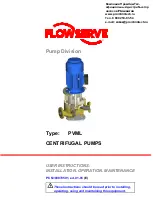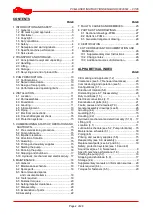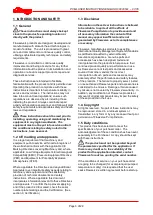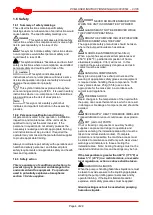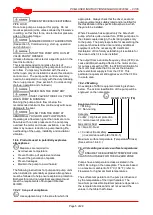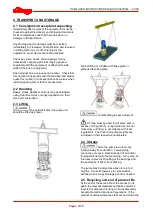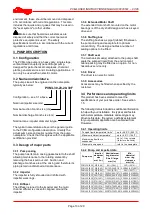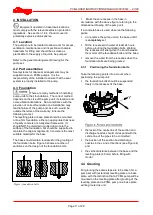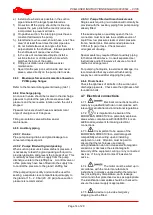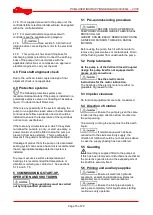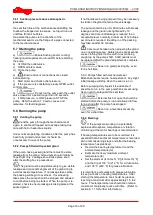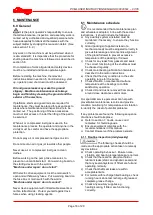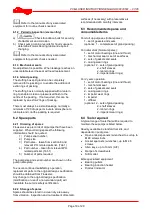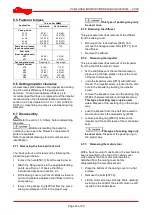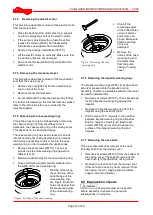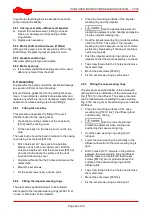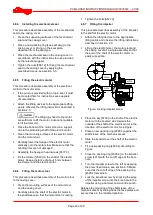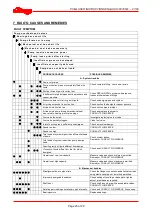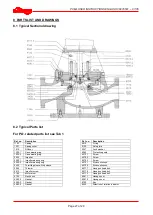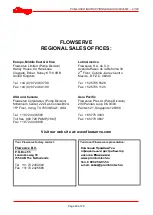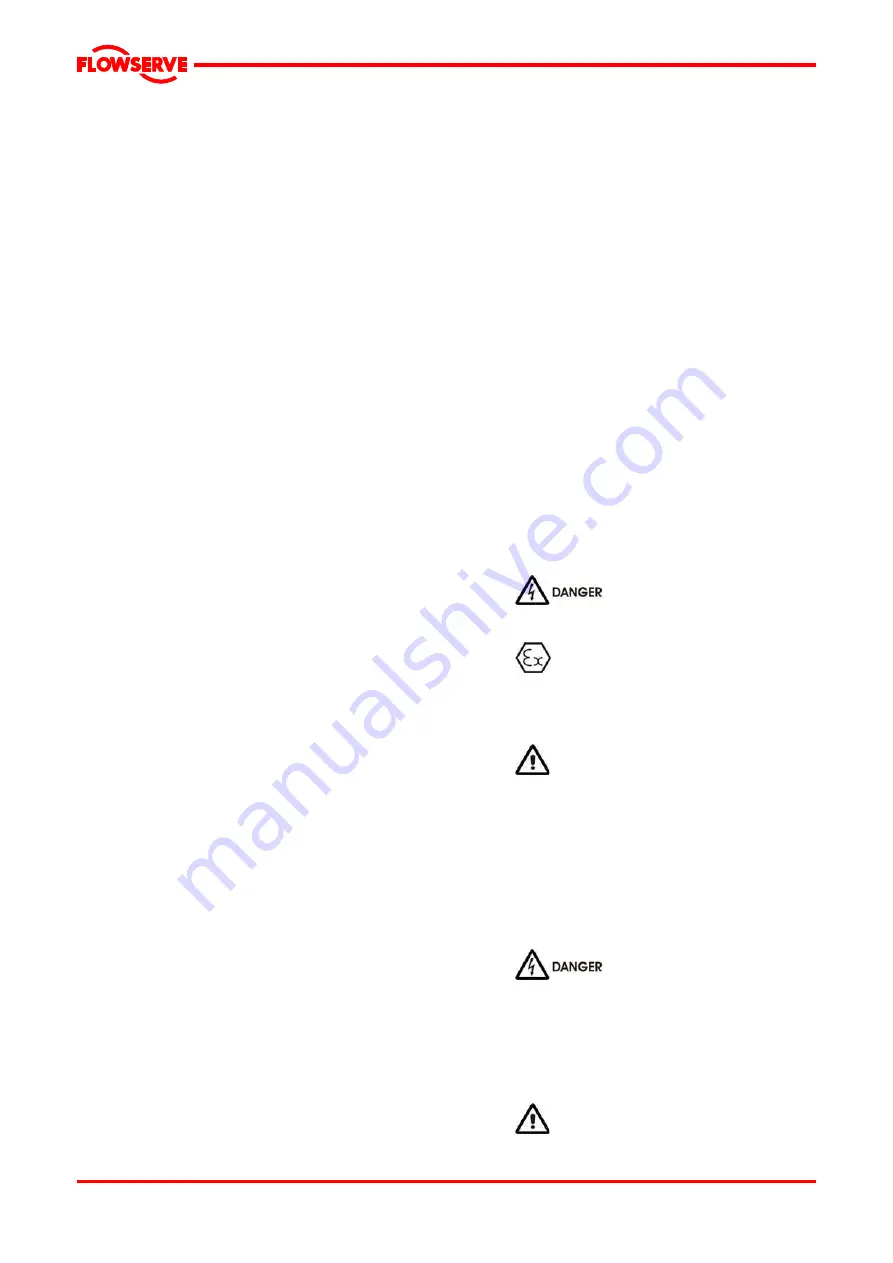
PVML USER INSTRUCTIONS ENGLISH 00079591 – 01/05
®
e) Install as few bends as possible in the suction
pipe and select the largest possible radius
f) On suction lift the piping should be inclined up
towards the pump inlet with eccentric reducers
incorporated to prevent air locks.
g) On positive suction, the inlet piping must have a
constant fall towards the pump.
h) Inlet strainers, when used, should have a net `free
area' of at least three times the inlet pipe area.
i) Do not install elbows at an angle other than
perpendicular to the shaft axis. Elbows parallel to
the shaft axis will cause uneven flow.
j) In the case of contaminated liquids, install a
suction strainer or dirt trap with a bore which
matches the bore of the pump..
k) Fitting an isolation valve will allow easier
maintenance.
l) Never throttle pump on suction side and never
place a valve directly on the pump inlet nozzle.
4.6.3
Maximum forces and moments allowed on
PVML pump flanges
Refer to the General Arrangement drawing (tab 1)
4.6.4 Discharge piping
A non-return valve should be located in the discharge
pipework to protect the pump from excessive back
pressure and hence reverse rotation when the unit is
stopped.
Pipework reducers should have a maximum total
angle of divergence of 9 degrees.
Fitting an isolation valve will allow easier
maintenance.
4.6.5 Auxiliary piping
4.6.5.1 Drains
Pipe pump casing drains and gland leakage to a
convenient disposal point.
4.6.5.2 Pumps fitted with gland packing
When suction pressure is below ambient pressure, it
is necessary to feed the gland packing with liquid to
provide lubrication and prevent the ingress of air. This
is normally achieved with a supply from the pump
discharge volute to the stuffing box. A control valve or
orifice plate may have been fitted into the supply line
to control the pressure to the gland / stuffing box.
If the pumped liquid is dirty and cannot be used for
sealing, a separate clean compatible liquid supply to
the gland at 1.5 – 2.0 bar (20 –30 psi) above suction
pressure is recommended.
4.6.5.3 Pumps fitted with mechanical seals
Single seals requiring re-circulation will normally be
provided with the auxiliary piping from pump casing
already fitted.
If the seal requires an auxiliary quench then a
connection must be made to a suitable source of
liquid flow, low pressure steam or static pressure
from a header tank. Recommended pressure is
0.35 bar (5 psi) or less. Check
General
arrangement drawing
.
Special seals may require different auxiliary piping
to that described above. Consult separate User
Instructions and/or Flowserve if unsure of correct
method or arrangement.
For pumping hot liquids, to avoid seal damage, it is
recommended that any external flush/cooling
supply be continued after stopping the pump.
4.6.6 Final checks
Check the tightness of all bolts in the suction and
discharge pipework. Check also the tightness of all
foundation bolts.
4.7 Electrical connections
4.7.1
Electrical connections must be
made by a qualified Electrician in accordance with
relevant local national and international regulations.
4.7.2
It is important to be aware of the
EUROPEAN DIRECTIVE on potentially explosive
areas where compliance with IEC60079-14 is an
additional requirement for making electrical
connections.
4.7.3
It is important to be aware of the
EUROPEAN DIRECTIVE on electromagnetic
compatibility when wiring up and installing
equipment on site. Attention must be paid to
ensure that the techniques used during
wiring/installation do not increase electromagnetic
emissions or decrease the electromagnetic
immunity of the equipment, wiring or any connected
devices. If in any doubt contact Flowserve for
advice.
4.7.4
The motor must be wired up in
accordance with the motor manufacturer's
instructions (normally supplied within the terminal
box) including any temperature, earth leakage,
current and other protective devices as appropriate.
The identification nameplate should be checked to
ensure the power supply is appropriate.
4.7.5
A device to provide emergency
stopping must be fitted.
Page 14 of 29

